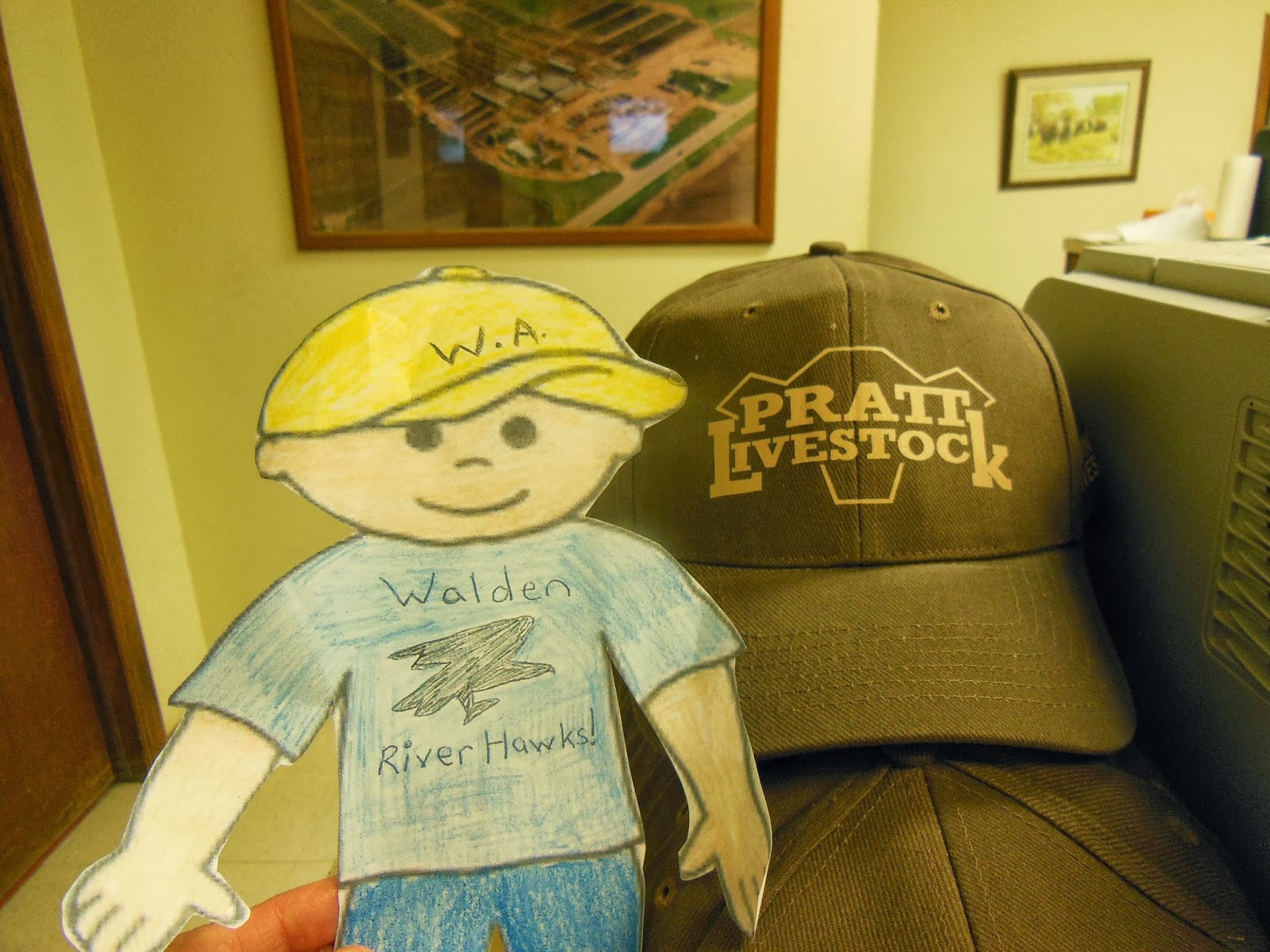I'm not usually a fan of fast-talking men. But I make an exception when it's a cattle sale. Our buddy, Flat Aggie from Walden Academy in Willows, California, doesn't say a whole lot, but we hope he's learning a bunch about what life is like on a farm in South Central Kansas. Flat Aggie is a project of my southeast Kansas blog friend, Nicole, and her Tales of a Kansas Farm Mom blog. Flat Aggie goes to farms all across the country to learn about
agriculture. Aggie then reports back to the class with a letter (or blog posts) from
the farm. Randy and I have been taking Aggie with us when we check
cattle and do other things on the farm.
Two weeks ago, Aggie went with us to Pratt Livestock when we sold feeder cattle. These are cattle that were born on our farm a year ago. It was a two-day process to get the cattle ready to come to the sale. (Check out Aggie's adventures with sorting and loading here.)
When we arrived at the sale barn, we went into the office to find out when our cattle would go through the sale ring. Since Aggie likes his cap, he was impressed with the Pratt Livestock hats. Too bad they were a little big for him!
Next, we headed into the sale barn. On the day we sold feeder calves, our 98 calves were among 5,000 head going up for auction. The auction started at 9 AM, but our first cattle didn't come through the ring until 11 AM.
As the cattle came into the ring, the auctioneer started his chanting. (He's the one in the middle with the microphone). The guy on the left also watches for bids. To bid, the buyers may nod their heads or raise their hand or say something like "yep." I told Aggie that I have to remember not to wave to anyone I know across the room. They might think I'm bidding!
The lady on the right (my friend, Anita) keeps track of who buys which cattle and uses a microphone to tell the workers in the back so they know which pens to put the cattle in after they leave the sale ring.
The ring has a scale so that buyers know how much the cattle weigh. In this particular pen of 16 heifers, they averaged 798 pounds each. The whole pen weighed 12,770 pounds. (See, Aggie? We do use math in farming!) For this group, the buyer paid $1.54 per pound. (The price shows per hundred weight.)
Below, Aggie checks out the sale sheet. You can also see all the people who came to the sale. Some of the people were others like us who were selling cattle. Some were cattle buyers. Some of them were taking cattle back to their own farms to feed until they are big enough to harvest for beef. Most were buying to take to feedlots for "finishing," which also means that they are feeding them until they reach the optimal weight for harvest.
Aggie was there in person, but there were a few buyers who "came" to the sale via the internet. Even after Aggie goes back to California, he could still watch the Thursday auction at Pratt Livestock.
In addition to the buyers and sellers, Aggie also noticed a stand with the initials, USDA. That stands for United States Department of Agriculture. A USDA representative is there to report market results of the sale to publications, to provide government statistics and to provide public information so all buyers and sellers have access to it.
Randy was pleased with how much the calves have gained, even during a cold winter. The heifers averaged 797 pounds each, while the steers averaged 914 pounds each. He was also pleased with the price we received. The cattle market is up, which is a good thing when you are selling. However, we also have to buy six new bulls this spring, so we will also have to pay more for those replacement bulls.
After the sale, the buyers arrange for other semis to come and pick up the cattle. They are loaded back onto the semis and taken to feedlots or to another rancher's location, where they will fattened for five or six months. Then they will be harvested for beef on American consumers' tables.









No comments:
Post a Comment